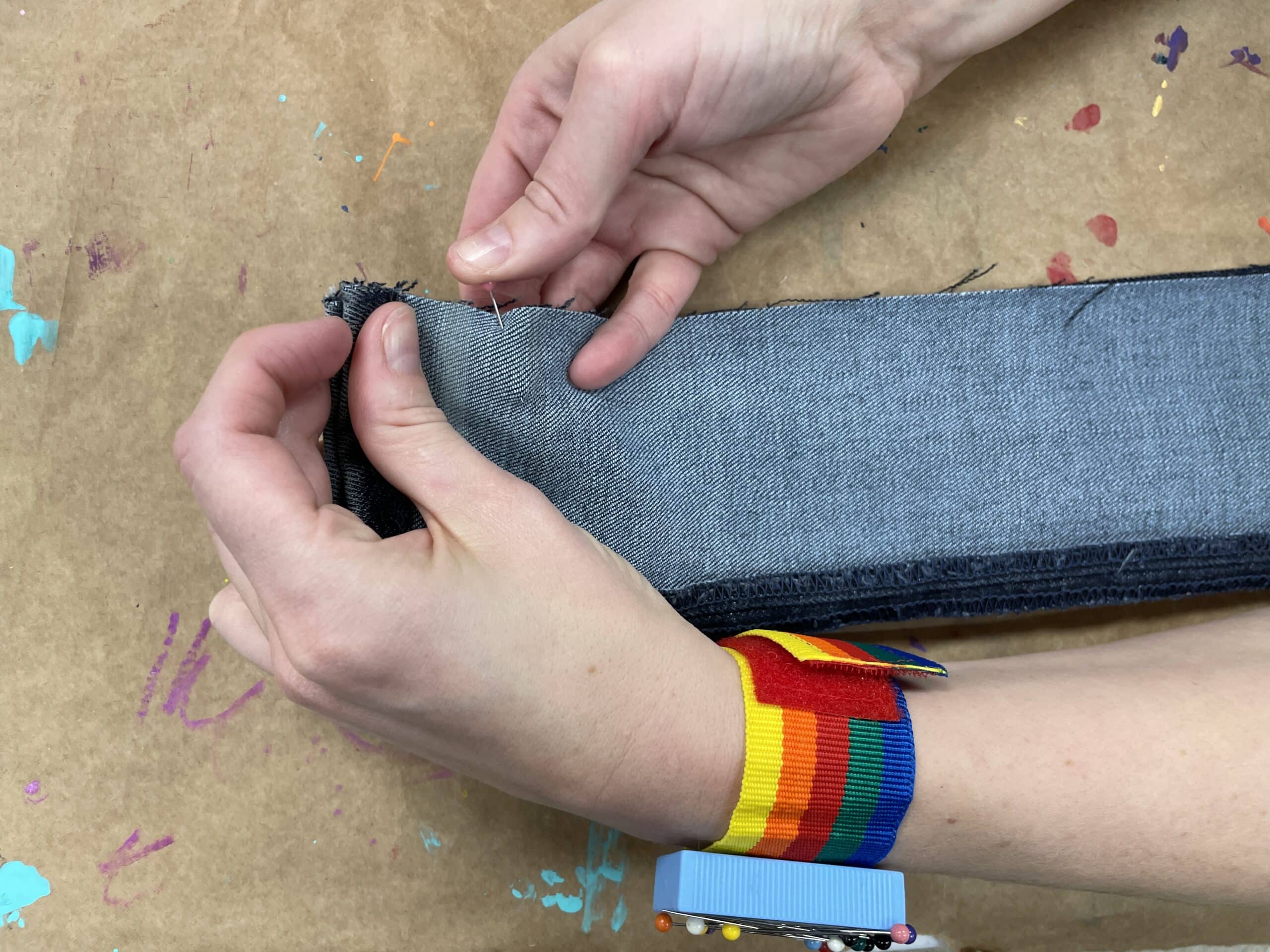The Latest
From Habitat
Tips to lower your energy bill and keep you comfy at home
Keeping a well-insulated home is important to stay cool in the summer, warm in the winter, and lower energy costs. This may seem intimidating to some, but it is easier than you might think! Follow these tips and tricks with low-cost or household items to boost your energy savings, no matter the season.
Draft blockers
Draft blockers sit in front of doorways and windows sills to prevent air from entering or leaving a home or apartment. They work by creating a dense physical barrier between which helps to insulate it against outdoor temperatures. There are many different and inexpensive ways to make these, but keep in mind that anything long and cylindrical with your choice of a dense filling will work.
For all methods, you will want to measure the width of your door/window and use a heavy filling to ensure complete coverage and a tight seal. Any gaps will let outdoor air inside and affect the indoor temperature.
Roll draft blocker
This is the easiest and most cost-effective way to prevent drafts. Take any sort of fabric and measure it against your window/door to fit, roll it up, and secure it with string or rubber bands. This is a quick and easy short-term solution while you work on a heftier stopper!

Traditional draft blocker
These are what comes to mind for most people when they think about making or purchasing a draft blocker. They can be made with a sewing machine or sewn by hand. A sturdy fabric like denim or canvas is typically used, but any tightly woven fabric will work too. You will want to sew three sides of the fabric, fill with your choice of filling, sew the open end so it is sealed, and ta da! Your very own draft blocker.
Tip: Using an old pant leg means you only have to sew two (short) openings instead of three!
Video: One sided traditional draft blocker
Materials:
- Sewing machine or needle and thread
- Fabric, at least 50 in. long and 7 in. long. This can be one piece or multiple sewn together.
- Scrap fabric or poly-fil stuffing
- Rice or beans (5lbs per stopper)
- Pins
Pool noodle draft blocker
For our not so savvy sewers, use a pool noodle the width of your door/window, a longer rectangle of fabric that will more than cover it, and your choice of filling. Start by wrapping the fabric around the noodle. On one side, put hot glue on the inside of the noodle and then shove your excess fabric inside, then top with more hot glue for good measure. From the open end, fill the noodle with your choice of filling and then hot glue the inside of the noodle, shove the fabric in, and seal with more hot glue. Remember to not overfill and leave room to put the excess fabric inside. Tip: You can make these to block one or both sides of the door.
Video: Double sided pool noodle draft blocker
Materials:
- Pool noodle
- Scissors
- Pillowcase
- Safety pins
Filling Materials
- Cat litter
- Sand
- Beans
- Rice
- Rocks
- Scrap fabric
- Corn kernels
Tip: Don’t overstuff your draft blocker, it needs to be able to fit snuggly against the seam.
There are so many different ways to make a draft blocker. At the end of the day, it is about creating a barrier between the indoors and outdoors so that your home stays at a comfortable temperature. They are guaranteed tools to lower your utility bill since your home will not continue to lose hot or cold air, reducing the energy used by your heating and cooling systems. Find out what works for your skill level and budget and give it a try!

Weatherstripping
While draft blockers are placed on a surface, usually in front of windows and doors, weatherstripping sticks around frames to further seal your home from the elements. You can purchase a variety of different ones on the market, but you can also make your own to shove into cracks.

DIY weatherstripping
Felt is a cheap and easy way to plug cracks into window frames, just tack, staple, or firmly secure them so they won’t budge. You can also roll up old plastic bags and shove them into window cracks to create a tighter seal. Read about this persons journey of DIY weather stripping here.
Materials:
- Plastic bags
- Scissors or knife
- Tape
- Smooth surface
Purchasing weatherstripping
There are lots of different types of weatherstripping available. There are sticky foam strips, vinyl strips, magnetic strips, tape, curtains, rubber, or a fin seal. Check with your local hardware store and consult with an employee about what might work best for you based on your skill level and budget. You can read more about different types of weatherstripping and energy efficiency programs from the Department of Energy here.
Partner Family
Stories
Darshida has been working to become a homeowner for years. She is a passionate nurse, a dedicated mother to four boys, and a longtime La Crosse resident. After years of hard work and unforeseen obstacles, Darshida and her family moved into their new home in spring 2023.





